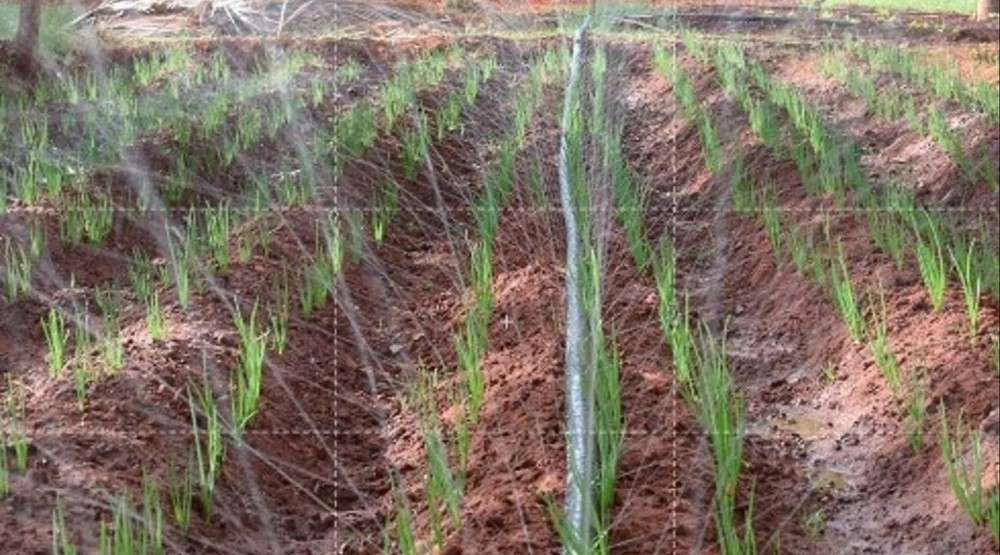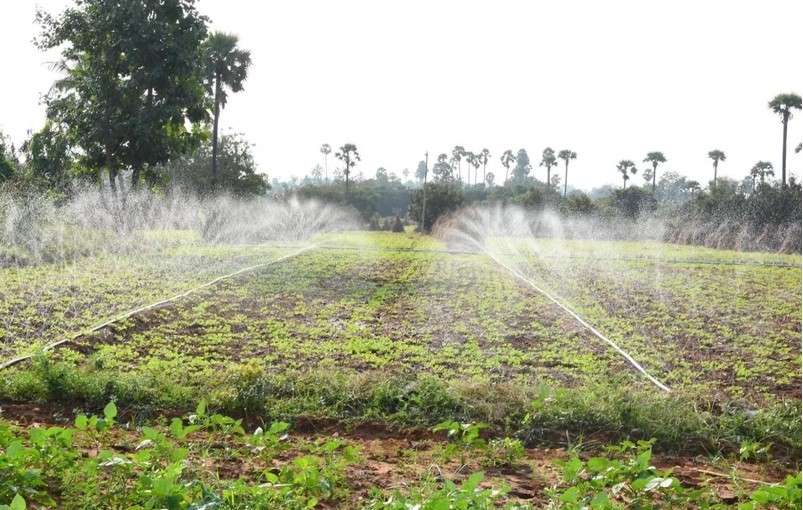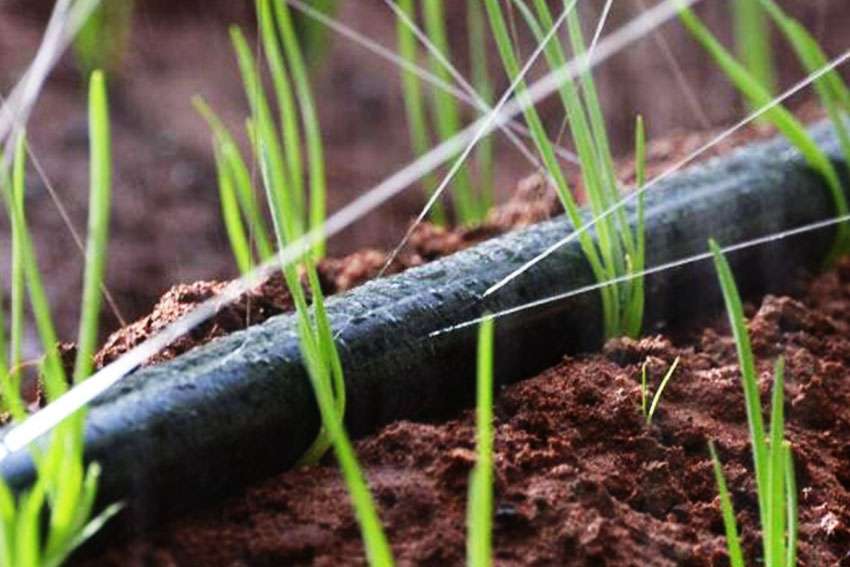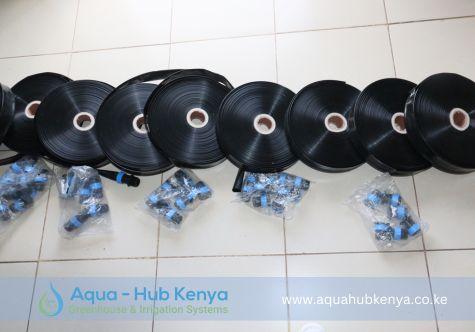Rain Hose Systems : Affordable Irrigation

Aqua Hub LTD is among the top-tier brands dealing in rain hose Systems in Kenya. Our services also extend to installation of rain hose irrigation kits and commissioning at customer-friendly rates.
Specifications of Rain Hose
- 100 M long rain hose tapes
- Nano-punched holes along the pipe length.
- Rain Hose pipe’s diameter sizes are 32 mm, 40 mm, and 50 mm.
- Flow radius depends on the pipe diameter, 32 mm delivers a 3 m throw, 40 mm provides 5 m, and 50 mm for 7 m.
- The system requires a pressure of 30 M head; thus, you need a pump of high pressure.
Complete Rain Hose Systems In Kenya
- HDPE mainline pipes – run from the pump outlet to the delivery hose pipes. Applicable in large farms or where the source of water is far away.
- Delivery Rain Hose pipes – Perforated rain hose line pipes.
- Start connectors – connects rain hose pipes to mainline pipes
- HDPE or Mainline pipe connectors – for connecting components of the mainline section
- Mini valves – for controlling water flowing to the individual rain hose pipes.
- End Caps – Closing the end of rain hose pipes to prevent water losses.
What is Rain Hose Irrigation?
Rain Hose Irrigation technique is a recent way of applying water on crops with a simulation of natural rainfall patterns.
The simulated rainfall occurs through a flexible hose pipe with a series of small holes on the entire pipe length. Water comes out of these holes in tiny high-pressure jets creating sprays that fall on the ground as rainfall drops.

How Does the Rain Hose Irrigation System Work?
Water from the source, which can be a tank, well, river, or dam, flows through a pipe connection to the rain hose pipes. At the source, a water pump must be connected to the system to deliver high-pressure flow rates.
The laser-punched holes release water evenly allowing a wider coverage on the crop zones.
How to assemble Rain Hose
- Set up and mount the pump head. On a flat ground surface near the water source, place your pump set. Connect the pump suction pipe to the inlet and insert it into the water source.
- Lay and connect the delivery mainline pipes to the pump outlet.
- Make holes on the mainline pipe equal to the rain hose delivery pipes.
- Insert rubber rings into the holes, then starter connectors. Lay rain hose tapes to the areas between plant lines from end to end.
- Connect rain pipe to the starter connectors and screw them tightly to connect.
- Connect rain hose pipes using hose to hose connector.
- Use end caps to seal the ends of the delivery hose pipes.
Crop-Specific Applications of Rain Hose Systems
Rain hose systems are applicable in irrigation of;
- Vegetables such as lettuce, spinach, and kale. etc…
- Animal feeds such as Napier grass, lucerne, and corn.
- Legumes such as beans and groundnuts.
- Fruit and nursery trees.
Advantages of Rain Hose Irrigation in Kenya
- Rain hose systems delivers uniform water coverage to the crop fields through all directional irrigation.
- It is reliable in the irrigation of high-water requirement crops such as animal feeds and grasses.
- Rain hose irrigation works for a wide range of crops including vegetables, fruits, and other field crops.
- Rain hose systems is ideal for use in soil irrigation prevention and environmental conservation. It is not prone to surface water run-offs and has mild effects on soil erosion.
- Rain Hose kits are affordable and easier to use and install compared to other irrigation methods.
Rain Hose Systems in Kenya: Not Recommended for;
- During windy days strong winds affect the uniformity of water supply in the fields.
- In irrigation of crops prone to fungal infections, onions, tomatoes, and potato.
- In clay soils or low-drained soils, it results in waterlogging which affects crop growth.
Rain Hose Systems in Kenya
Buy Rain hose systems at convenient prices from Aqua Hub Kenya, the most reliable supplier in Kenya.
Call 0790719020


